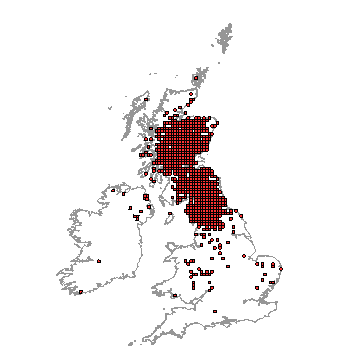
Tel: +44 (0)1524 594951 Fax: +44 (0)1524 593186 E-mail: m.pacha@lancaster.ac.uk
The Study
Since the 1992 Global Convention on Biodiversity, the construction of new databases and information technologies has been seen to be a matter of urgency in the biodiversity policy domain. Global biodiversity is held to be in crisis and understanding the extent of its loss and the biodiversity that remains is thought to be highly important for national and global policymaking.
 However,
there are substantial challenges to be faced when designing
databases and related software packages to document the world's biodiversity.
One especially difficult problem is how to make strong connections between
centralised, standardised information on the one hand and the information
needs of local people and places on the other.
However,
there are substantial challenges to be faced when designing
databases and related software packages to document the world's biodiversity.
One especially difficult problem is how to make strong connections between
centralised, standardised information on the one hand and the information
needs of local people and places on the other.
Databases, Naturalists and the Global Biodiversity Convention is a one-year study that focuses on the issues that arise from recording biological information in different software's and the connections that exist between people, national and global policies. We wish to investigate upon this problem by examining two different software packages used for the collection of biological records. Both systems contribute to biodiversity databases in the UK. First, Recorder , which has been developed within the National Biodiversity Network (NBN), a partnership of organizations concerned with the collection, management, exchange and use of wildlife information in the UK. And second, Mapmate , which has been developed by a private organisation and its design has been driven largely by the user needs of field naturalists in the UK.
What the project aims to achieve
The research project aims to reach an understanding of biodiversity software technologies and their users by looking at:
 How
and with what technologies, different recorders document their knowledge
of the natural world.
How
and with what technologies, different recorders document their knowledge
of the natural world. - How certain recorders choose to use one or other or both recording packages.
- Who, and to what ends, different users communities access data provided by both Mapmate and the Recorder.
- What was taken into account about both data contributing and user communities, by the designers of the distinct software packages.
- How the data gathered contribute to national iniciatives like the National Biodiversity Network?
Through the understandings generated, the research aims to provide an opportunity for reflection for data contributors, users and technology designers about the advantages and disadvantages of each system and to explore possible ways in which they might mutually or individually work towards the protection of local and global biodiversity, whilst remaining "in touch" with local users and contributors.
| Methods and Dissemination | Progress |

